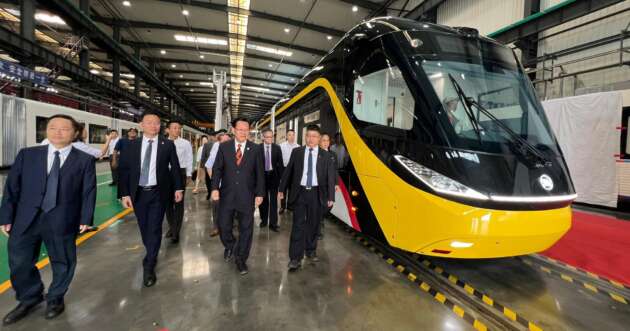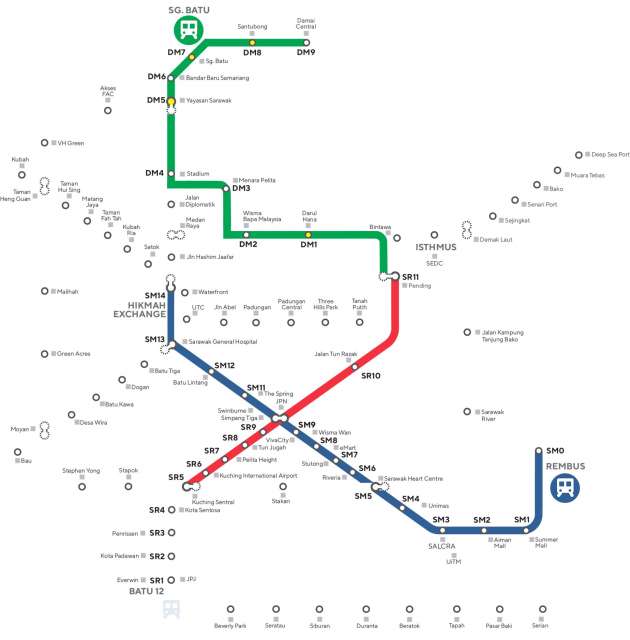Work on phase one of the Kuching Urban Transportation System (KUTS) project is now at 29.89% as of April. According to state deputy transport minister Datuk Dr Jerip Susil, this was slightly behind the planned schedule of 33.86%.
He said the operations of phase one would be carried out in stages, with the first section of the Blue Line from Rembus to Riveria now anticipated to begin in the fourth quarter of next year, The Star reports. “This is later than the initially targeted date due to construction delays,” he said. He added that the full operation of the entire phase one was expected to commence in 2028.
Phase one of the KUTS project involves three ART lines totalling about 69.9 km with 31 stations. The Blue Line runs for about 27.6 km from Rembus in Kota Samarahan to Hikmah Exchange in the city centre, while the Red Line stretches 12.3 km from Kuching Sentral to Pending. The Green Line covers about 30 km from Pending to Damai Central.
Hydrogen-powered autonomous rapid transit (ART) trackless trams, running on rubber tyres and operating on dedicated lanes, will form the backbone of KUTS, with the first two Chinese-made units set to arrive in Kuching by the end of the year.
The Chinese-made ART vehicle measures 30.2 metres in length, 2.65 metres in width and 3.7 metres in height. It can reach speeds of up to 70 km/h and will be able to accommodate 300 passengers
Looking to sell your car? Sell it with Carro.













If they had bought a volvo or MAN articulated buses maybe way cheaper. Easier parts and maintenance.
Having to build infrastructure just to make lanes exclusive for this tram-like thing is asinine.
Even if they wanted to promote hydrogen usage why not hydrogen powered buses?
Hydrogen FCEV,
Visual Track less Autonomous
Simply practical, GREEN and effective.
300 passenger each ART, very nice.
Physical trackless transportation still need 3 years?
Okay, so LRT was too expensive, but you still want tracked system, because lets be honest this is Malaysia and there’s no way a free-traveling autonomous tram will be safe from other motorist. Why not just articulated busses(presumably the other plus of the LRT is the capacity) and dedicated bus lanes? You can even squeeze into most existing roads.
Now, the automation is also a VERY BIG plus, and I can imagine the general distrust in the efficiency of human drivers being a big factor for this project. But I feel like that’s down to enforcement. You could spend way less on training and monitoring than this autonomous system that is already very costly, and could be even costlier if it fails. Japan does it! Why is it such a big to-do for Malaysian employers to ensure that their workers are efficient?!
Probably because they themselves, aren’t.